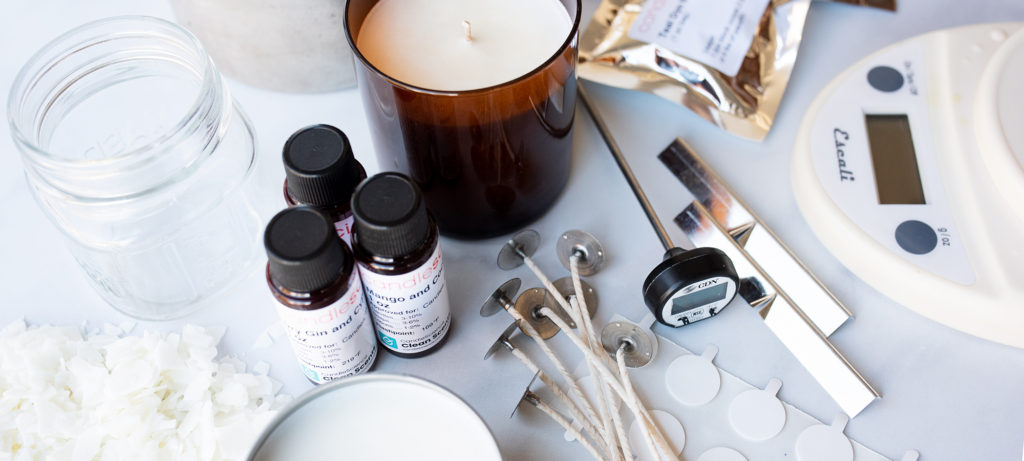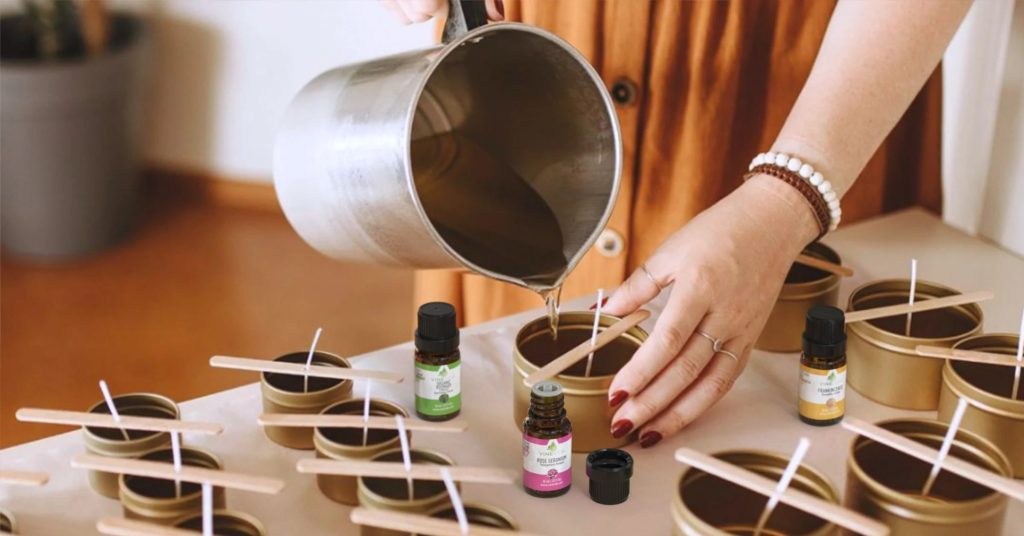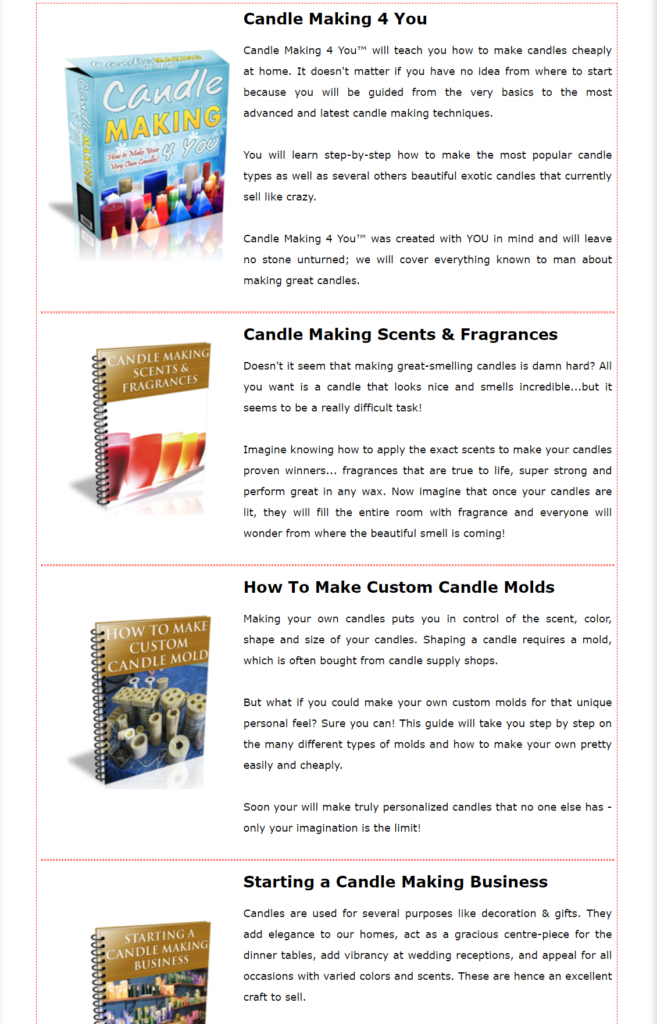When you first begin your adventure into candlemaking, you have the idea that it is simple. After all, it’s just wax, a wick, and a mold. Then you start doing your research, and you realize, “it’s not as easy as I thought it would be.”
You’re probably here because you’re in the “research phase” of your new adventure, or you’ve already made a batch or two that didn’t turn out the way you wanted. You’ve come to the right place if you’re seeking for candle-making advice!
Making candles is a sort of art. You can’t rush it, and you rarely get it right the first time. It will be different for everyone depending on how detailed you are with your desired output, which is perfectly fine. There is no “one way” to accomplish it, and there are various candle tactics you may use when you eventually alter your kit formulations to meet your preferences. Remember that candles can be quite personal. Every candle maker has a different style or preference, based on how you want your candle and candle lights to look. You can always start with a “starting kit” that includes explicit instructions and pre-measured components, and then tweak it as you learn more. Here are ten candlemaking tips and tricks for everyone.

It is acceptable to make mistakes.
When their first batch of candles does not turn out as intended, many new candle manufacturers become frustrated or disillusioned. You may believe you’re not cut out for this or that the melted wax and supplies are a waste, but don’t worry! It’s alright to make mistakes on your first few attempts because that’s how you truly learn and comprehend the nature of the substances you’re utilizing. You will appreciate finding your new craft if you trust the process.
The nice part about candles is that you can always re-melt your wax melts and “reformulate” them by adding more of your raw materials and then experiment on how to improve your candle. There are numerous ways to repurpose your “failed batch” so that it does not go to waste. Here’s one of several “pro candle suggestions” we have to offer. You can use it as house decor or to flavor your next batch of candles. How? Have you ever come across mosaic candles or candle crafts? Melt the wax, color it, and make something creative with it!
Patience and practice
As previously stated, creating your ideal candle takes time, work, and the proper tools and supplies. To avoid becoming discouraged, whether you’re making coconut wax candles or scented candles, you must practice and recreate your formula as you wish. Be patient and keep practicing until you get the desired level of quality.
Notes for removal
Candle-making is a journey, and you’ll want to track your progress, especially once you’ve begun developing your formula. Your candle notebook will help you keep track of your progress, what works and what doesn’t, the wax melts or recipe you used per batch, and the results you get when you test burn to see how well your candle lights. Take note of the dates and times, the type and percentage of wax used, the type and percentage of fragrance oils used, the wick and glass size, the mold you used, and the temperature at which you added these extra materials.
Understand your wax
There are over 60 different types of wax you may use to manufacture candles, such as soy wax or coconut wax, which means there are hundreds of conceivable combinations. Each has advantages, so if you’re not sure where to begin, you can visit our blogs area where we discussed Everything You Need to Know About Coconut Wax and a few of your other options – this can be your beginning point and then grow from there.
Understand your wicks.
Different wicks will react differently to various wax melts. Because the wick can effect the longevity of your candle, the candle light, the safety of the candle, and the burn, you should match the wick to the sort of candle you’re producing. When selecting a wick, consider the appropriate wax, the size of the candle, the scent, and the color of the candle. Online, you can obtain charts or “cheat sheets” listing wick possibilities. This will help you choose a wick, or you may just make one for yourself.

Understand your smells
Another element to consider, similar to understanding the dynamics of your wick and wax melts, is your smells. We all love scented candles and want them to last a long time, but there are various ways to add scent to your candles. We have a blog on which fragrance to use for your candles and other crafts, and it’s a great place to start learning about fragrances. However, aside from understanding fragrance notes and how to create your own scent blend, you also need to understand how each type of oil or raw material will affect your candle. Some oils, for example, do not mix well with hot wax melts, others do not mix well with coconut wax, and still others can block your wick, resulting in odd-looking candle lights. This is why some scented candles smell great but don’t provide good candle light.
Less is more.
We understand! You may want to get inventive and make your candles more pretty, and you may even want to add so many ornamental components like flowers or stones, or perhaps a combination of smells that will produce a fragrant candle that will make your entire home smell amazing, but just relax! The finest candle suggestions we can provide you are to avoid going overboard. It’s not always the greatest option, and sometimes a simple minimalist candle is all you need! Furthermore, all of those new parts can be a fire threat, so be cautious of what you choose to add.
Light your candles.
This is one of many candle tips that may sound strange, but if you want to avoid underburning and ensure lovely candle lights, make sure there are no “air pockets” in your candle while you’re constructing it. Before pouring the next layer of a pillar or container candle, use a skewer to poke holes. These are known as relief holes, and they are used to remove air pockets that occur in your candle as it cools and shrinks. This makes the candle more compact and reduces the possibility of tunneling and under-burning.

Secure your wicks
A common beginner candle maker error is not anchoring the wick. Metal tabs at the end of your wick are merely intended to restrict the wick from being dragged out of the candle; they do not ensure that it will stay in place. At the top and bottom of your mold, secure your wick. One of the best candle tactics is to use putty or sticky tack to keep it in place and prevent leakage.
Blow dryers can be useful.
You can add this to your candle knowledge! On occasion, the surface of your candle will have bubbles or uneven borders on top. You don’t have to scrape the top or start over! Simply heat the top of the candle in circular motions with your blow dryer on the lowest setting. Allow the heat from your blow dryer to melt the top layer of the candle, then allow it to cool. The surface of your candle may be simply smoothed with a blow dryer, and it will come out as smooth as ice!
Want to make money making candles? Earn $1,000s of dollars selling your candles? Want to be your own boss? Click Here for more secrets


